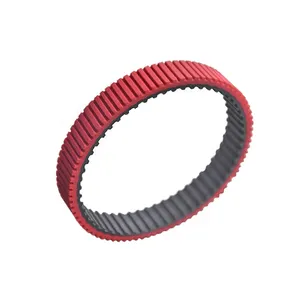Understanding Timing Belt S2M
Timing belts are a crucial component in various industrial machines, and the timing belt s2m category stands out for its specific design tailored to meet precise power transmission needs. These belts are characterized by their pitch, which is the distance between tooth centers, designed to fit into corresponding pulleys, ensuring a smooth and efficient transfer of motion.
Types and Applications of S2M Belts
The s2m belt variety encompasses several types, each suited to different industrial environments. From small-scale machinery to large-scale production lines, these belts are integral in applications that require accurate timing and positioning, such as 3D printers, office automation equipment, and various types of packaging machinery.
Features and Materials
Constructed primarily from rubber or durable synthetic polymers, the bando s2m belts are engineered for resilience. Their build quality ensures that they maintain elasticity and resist abrasion effectively. The teeth of the belt, often coated with a protective fabric, provide a reliable grip on pulleys to minimize slippage and maintain performance consistency.
Advantages of S2M Timing Belts
The advantages of using a timing belt s2m include their flexibility and efficiency in operation. These belts are designed to be low-maintenance and easy to work with, providing a reliable solution for power transmission without the need for frequent adjustments or replacements.
Selecting the Right S2M Belt
Choosing the correct s2m timing belt involves considering the belt's dimensions and the specific section type required for the application. It's essential to match the belt profile with the pulley to ensure optimal performance and longevity of the belt system.
Discover Diverse S2M Belt Options
For those in search of a suitable s2m belt, the selection available caters to a variety of preferences and requirements. While navigating through the options, it's important to focus on the design and specifications that align with the intended use to ensure that the chosen belt will perform as needed in its operational context.



































 浙公网安备 33010002000092号
浙公网安备 33010002000092号 浙B2-20120091-4
浙B2-20120091-4